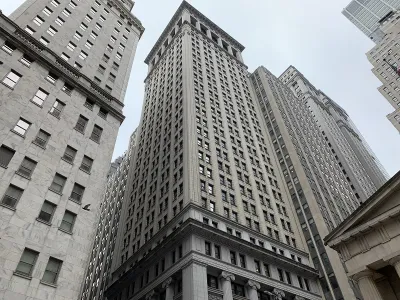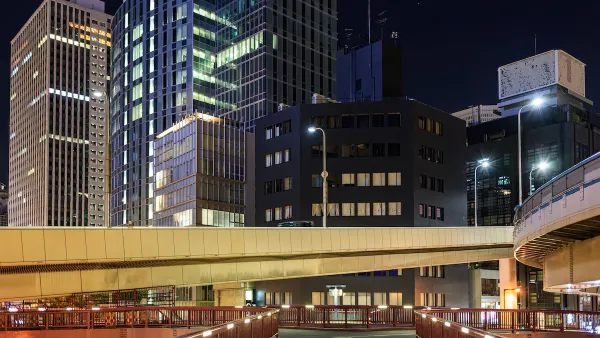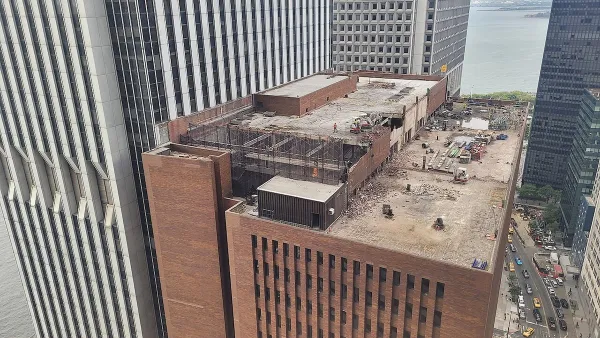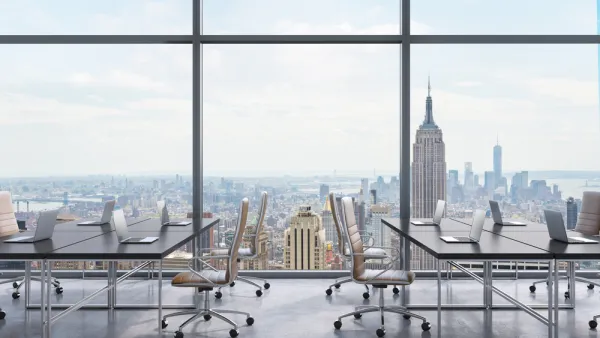A formula for the ideal office-to-housing candidate.

On the heels of a New York Times story by Emily Badger and Larry Buchanan explaining the complicated puzzles involved in converting office buildings to housing, Nate Berg, writing in Fast Company, describes the formula for an office building that can be successfully converted: “Typically, they’re mid-rise, modestly sized structures built before World War II, with at least two sides fronting open areas or streets in neighborhoods near, but not directly in, the city’s dense financial center.”
Architect and structural engineer Charles F. Bloszies analyzed San Francisco office buildings and found dozens of potential conversions that “make sense both economically and structurally.” The analysis follows the principle highlighted by Badger and Buchanan: that a residential building requires access to light and air for all units, features common in the pre-war buildings described above, those found in what Bloszies describes as the ‘Goldilocks zone.’ Unlike modern high-rise offices with sealed windows and little light exposure, “Bloszies’s analysis found that there are many structures that don’t have those issues, mostly four- or five-story prewar buildings that have operable windows and nestle into neighborhoods instead of towering above them.”
Berg adds that “The kind of analysis Bloszies undertook could be done with public information in nearly any city. Savvy developers, project-ready architects, or even proactive city planners could quickly identify office buildings in this Goldilocks zone and either start pursuing projects or fast-track the zoning changes that could help them take shape.” A future as housing may not be in the cards for all former office buildings, but some could also serve as data centers, logistics facilities, or other non-residential uses.
FULL STORY: Too big? Too small? No, these office buildings are just right for housing

Analysis: Cybertruck Fatality Rate Far Exceeds That of Ford Pinto
The Tesla Cybertruck was recalled seven times last year.

National Parks Layoffs Will Cause Communities to Lose Billions
Thousands of essential park workers were laid off this week, just before the busy spring break season.

Retro-silient?: America’s First “Eco-burb,” The Woodlands Turns 50
A master-planned community north of Houston offers lessons on green infrastructure and resilient design, but falls short of its founder’s lofty affordability and walkability goals.

Test News Post 1
This is a summary

Analysis: Cybertruck Fatality Rate Far Exceeds That of Ford Pinto
The Tesla Cybertruck was recalled seven times last year.

Test News Headline 46
Test for the image on the front page.
Urban Design for Planners 1: Software Tools
This six-course series explores essential urban design concepts using open source software and equips planners with the tools they need to participate fully in the urban design process.
Planning for Universal Design
Learn the tools for implementing Universal Design in planning regulations.
EMC Planning Group, Inc.
Planetizen
Planetizen
Mpact (formerly Rail~Volution)
Great Falls Development Authority, Inc.
HUDs Office of Policy Development and Research
NYU Wagner Graduate School of Public Service




























